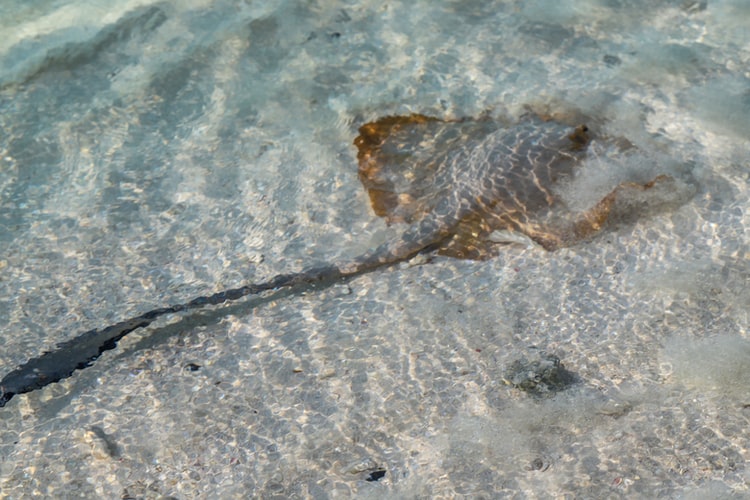Singapore—Apparently there were at least two recent incidents of people getting stung by stingrays at Sentosa.
Many netizens were alerted to one incident when a man named Benjamin Koellmann posted a warning on the Nature Society (Singapore) Facebook page on Sunday (Apr 4), outlining his painful ordeal at Tanjong Beach.
He enjoyed an outing there with his family but inadvertently stepped on a stingray as he was about to leave the water.
“What followed was three nights in the hospital and some of the most intense nerve pain I’ve felt in my life, not just locally at the site of the sting but also shooting up my leg and down into my foot – and that’s despite constant and generous doses of heavy painkillers (morphine, Tramadol, Panadol, etc),” he wrote.
The doctor who attended to his injuries at Singapore General Hospital, as well as two lifeguards who helped him told him a similar incident had happened at Siloso Beach on the same day.
“So this apparently wasn’t a one-in-a-million freak accident and does happen sometimes in Sentosa,” wrote Mr Koellmann.
He stayed at SGH for three days, and described the initial sting as “like a hammer hitting my ankle!”


Mr Koellmann added that he did not know of any “surefire” way that one can protect him or herself, as stingrays can penetrate even thick shoes, but added that it’s better to shuffle one’s feet when in the water at Sentosa, instead of taking firm steps.
Experts quoted in The Straits Times (ST) concurred with this, adding that these sea creatures are usually mild-mannered, and only sting when they feel threatened.
Therefore, a careful shuffle would be advisable, especially since the water in Singapore’s beaches is not clear, but is often opaque.
ST quoted Dr Tan Heok Hui, the ichthyologist at the Lee Kong Chian Natural History Museum, as cautioning bathers to be aware of their surroundings when they are in the water.
He added that the ray that stung Mr Koellmann had likely been in defensive mode.
“In this case, when the ray was stepped upon, it raised its tail and its sting, which is located near the base of the tail, was pushed upwards and forwards, piercing the offensive object – which was the person’s foot – to drive it off.”
Huang Danwei, a marine biologist with the National University of Singapore, called stingrays docile and said, barring a disturbance, they don’t normally attack. And usually, they merely swim away.
He said that people who go into the water should avoid getting too close to rock crevices or the undersides of corals, where the stingrays may hide.
“Walk slowly and don’t venture into murky waters. If you must move and can’t see what you’re stepping on, take slow cautious steps and shuffle your feet before advancing.
“If you see a stingray close by or feel movement under your feet, move away in one decisive motion, as stingrays cannot predict your movements if you move erratically. So they may feel threatened and respond by stinging,” he added.
/TISG

